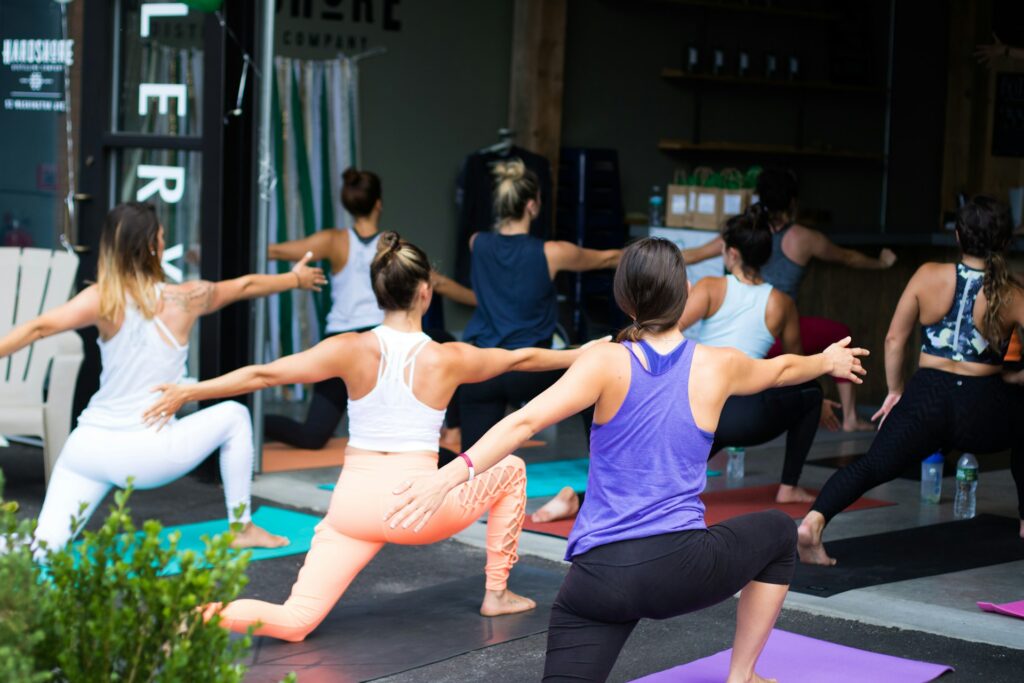
Body + Mind is reader-supported. We may earn an affiliate commission when you buy through some of the links on our site.
Most people adopt a yoga practice to relieve stress and calm their thoughts — some may be more interested in learning the various poses and mantras for inner peace. However, when it comes to yoga, there is only one type with a fully holistic approach: Integral Yoga.
Integral Yoga is relatively young compared to classical forms, having only been introduced to the world within the last century. Yet, it pulls from the most ancient yogic practices and principles for a whole-body and soul transformation.
Most importantly, you’ll learn much about the power of interconnectedness, compassion and self-awareness beyond the mat. Here is a closer look at the definition and principles of Integral Yoga, the various yoga limbs it pulls from, its benefits and how to adopt a practice yourself.
Sri Swami Satchidananda founded Integral Yoga in 1996, derived from the six classical yoga branches and teaching from Sri Aurobindo. The practices concentrate on spiritual transformation and divinity within all.
Satchidananda became known as the “Woodstock Guru” because his teachings on peace, service and interconnectedness resonated with people during the 1960s.
The primary principle of Integral Yoga promotes the triple transformation into the divine— achieving psychic, spiritual and supramental states of consciousness. Unlike other yoga paths — in which the sole goal is to reach nirvana or moksha — people who practice Integral Yoga also seek to recognize a divine power within the physical world.

Universalism in Integral Yoga comprises the six limbs of classical yoga — each with its own fundamental truths and ideals. The following briefly describes the six branches of yoga found in Integral practices.
Hatha Yoga is the physical branch, utilizing various asana postures, breathing techniques, hand positions, chakra stimulation and mantras to achieve greater flexibility, strength and relaxation. Ultimately, practitioners seek to achieve sublimity through samadhi — the highest concentration state you can reach.
Raja Yoga leans into one’s mentality — such as focus and meditation — to strengthen your clarity and help you achieve greater control over your thoughts. Because of its challenging nature, Raja Yoga is most suitable for those with ample yogic experience.
Bhakti Yoga is a devotional practice cultivating love and devotion toward the Divine. People attain enlightenment through prayer, mantras, mudras — symbolic hand gestures — and providing service to others. Some practitioners also practice through kirtan, which is repeating a phrase, word or deity’s name against music.
The Karma limb is selfless service toward others. Those who practice Karma Yoga foster compassion and gratitude while connecting more deeply with the world around them. There are two facets of Karma Yoga: The Action and the result itself. A good deed results in positive outcomes, while a poor action may result in something negative.

Practitioners of Jnana Yoga attain wisdom and understanding through self-reflection and study. They seek to gain knowledge and liberate themselves from unawareness and suffering. Like Raja Yoga, many consider Jnana among the most challenging yoga types you can adopt.
Japa Yoga practitioners repeat mantras, chants and other sounds to connect with the Divine. This branch mainly focuses on becoming more present and building a deep connection with something bigger than yourself.
The six limbs within Integral Yoga offer physical, mental, emotional and spiritual growth over time. As a whole, you receive guidance and tools to work toward sadhana — your awakening.
A regular Integral Yoga practice can benefit you in the following ways:
Integral Yoga is accessible to every age and experience level, taking the best parts of each limb and creating a holistic, feasible approach to enlightenment and well-being.

Whether you’re a beginner or have explored other yoga limbs before, Integral Yoga may provide the enriching path to awakening you’re looking for. To start your practice, gain an understanding of the six branches of yoga as they work together integratively. It is also essential to understand its guiding principles, including the triple transformation, selfless service, spirituality and universalism.
Beginners should enroll in a class to help build a foundation. Instructors will give you basic postures, sequences and meditation techniques for a gentle introduction. Remember to always listen to your body — you’ll want to take breaks and modify challenging poses as you build up stamina.
Slowly begin incorporating other methods — like chanting, mantras, mudras and kirtan — as you become more comfortable. You may want to start with 15-20 minutes of practice several times a week and work up to longer durations.
Other things you can do when creating an this holistic yoga practice include the following:
Whichever way you decide to approach your Integral Yoga practice, remember to go at your own pace. Establishing the best practice for your life may require you to go through different teachers and styles to know what is best for you. Connecting with the Integral Yoga community — in-person or online — is another way to strengthen your practice.
Because each limb of yoga touches on something different, you can improve every aspect of your existence by adopting an Integral Yoga practice. As you embark on your yogic journey, take your time to reap the benefits of awakening and self-discovery.